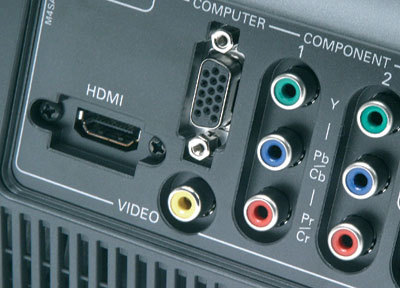Video Projectors: Evolving Towards High Definition
So Where's The HD?
Sources of HD signals currently come from various origins: TV channels, programs in D-VHS format (a VHS cassette in HDTV format), or Microsoft's proprietary format, WMHD, which can only be read by a PC. A High Definition version of MPEG-2 is also available.
In the US there are several networks (including ABC and Fox) broadcast in HD via satellite or cable. In Europe, only one satellite channel broadcasts in HD: Euro1080. Digital broadcast television and satellite channels should be moving to HD at some point, but nobody knows when. HD-DVD players (Blu-Ray and HD-DVD) won't be arriving before early 2006, and HD movies will be even later than that. Microsoft HD-DVDs for PC exist, but they're scarce.
And Yet
Based on all of that, you're probably thinking that buying an HD-compatible video projector right now is not worthwhile, given the shortage of compatible programming. But that's not quite true, since a standard DVD played on a device that can project a 720p signal will gain in quality. Aliasing (the "stairstep effect") will be much less visible; you can also do without filtering of the source, yet get better depth of field. Textures will be finer, which will make details of complex objects more visible.
So, buying an HD-compatible projector is a good thing in itself, because the overall quality of the picture will improve, regardless of the source. Your investment won't be obsolete since it'll be ready as HD media becomes more and more available. However, don't forget to buy the right DVD player for your projector - that is, one with a YUV, HDMI, or DVI output.
We decided to test a new series of video projectors, some of which are really capable of displaying an HD signal (720p), and others that achieve HD-compatibility only by adapting the signal to standard format.
Get Tom's Hardware's best news and in-depth reviews, straight to your inbox.

